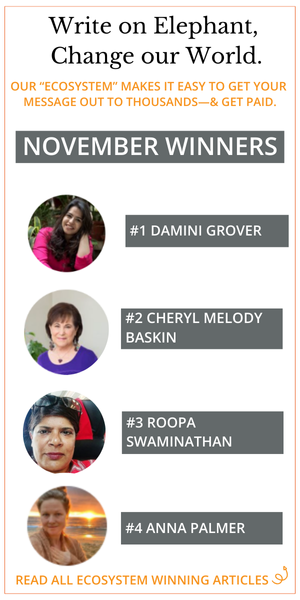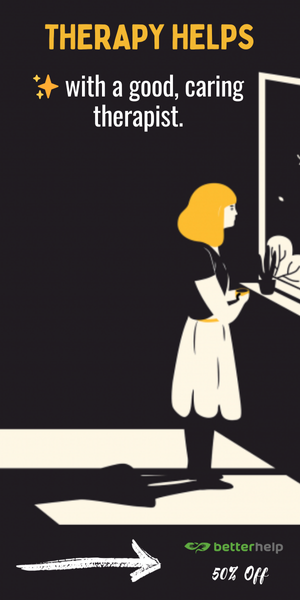View this post on Instagram
I have struggled with codependency throughout my entire adult life.
Plagued with abandonment issues, my romantic relationships were my lifeboat, as I gladly turned over responsibility for my identity and self-esteem to my partner.
I dove headfirst, every time, losing myself in my relationships. I avoided focusing on myself, putting all of my energy into the relationship instead. Attachment to my relationships kept me grounded, until they blew up.
And they did, every time.
So naturally, the idea of “nonattachment” or “impermanence” scared the sh*t out of me because I’ve spent my life chasing the exact opposite. My therapist recommended that I read Pema Chödrön’s When Things Fall Apart. I was stuck, depressed, and dealing with the sudden end of my marriage.
In her book, she writes, “Trying to get lasting security teaches us a lot, because if we never try to do it, we never notice that it can’t be done.”
I took notice. I realized that, ironically, in my quest for attachment and security, my life was a study in impermanence. Failed relationships, lost careers, changing addresses—nothing in my life had been permanent. The only constant was me, trying to hold on tight each time, to avoid the excruciating pain of loss.
Attachment always seemed romantic to me. Walking in the rain. Dancing in the dark to the sounds of our breath. Slow and close. Mind-blowing sex.
A love to hold onto forever. That was a permanence I pursued fiercely. But I never found it.
Instead, I suffered. I felt gut-punched, ripped open. Constant anxiety. Fear of being alone with my thoughts. Unable to control my fate, or an unknown future.
We chase attachments and permanence because we think we need them to survive. We don’t feel comfortable and complete within ourselves, and we fear loneliness.
But life is full of impermanence whether we like it or not. Bliss doesn’t last. Relationships don’t last. And rather than embrace the joy we experienced, we are left heartbroken and suffering.
But we are always evolving. Impermanence is the foundation of our lives. Instead of fearing it, we can try to lean into it. Love people for who they are each day, whether that love will last a day or a lifetime. We don’t need to spend our energy attaching expectations of permanence to it, because we have no control over that.
To do this, we have to get comfortable with ourselves first. We have to accept and love ourselves intimately before we can share that love with someone else, without expectations or conditions. This requires daily practice of self-care and vulnerability.
Nonattachment doesn’t mean we are letting go of romantic love, or that we are ambivalent toward our partner. It just means we let go of idea that we can control how long it lasts. We can be disappointed if things don’t work out. We are only human. But our lives don’t have to be wrecked if things end.
Understanding impermanence is easier. When we have something that makes us feel good we want it to last. But if we have tried to manipulate permanence, we have learned that we can’t do it. If we can shift the focus from staying with someone to just being present with someone, we can experience more joy and reduce our suffering.
In my exploration of nonattachment and impermanence, I learned that:
1. Nonattachment and impermanence go together. Our desire for permanence is at the root of our attachment issues. We crave stability. We fear feeling hurt and alone. We cling, as if this will help us avoid feeling those things. If we begin to accept the nature of impermanence, we can let go of trying to control outcomes. Then, we can begin to relax, and shift our focus from attachment to appreciating each day.
2. Loving someone is not the same as attachment. We can love someone deeply without clinging to the relationship. Unhealthy attachment has more to do with us than with the relationship. If we are not secure and happy with ourselves, we attach because it is where our self-esteem comes from. If we can learn to be responsible for our own happiness independent from another person, then we can share our love freely, without needing to hold on.
3. We can accept that nonattachment doesn’t mean we won’t feel loss. We can be sad if a relationship ends. We can miss someone. We can cry. And then we can let it go. Breakups are painful. Processing loss is part of life. But we really suffer when we hold on to something that no longer exists. We get stuck, and we can’t move on.
If we practice releasing our need to control outcomes, and we practice self-love, we can more easily process the loss and move forward.
4. We can appreciate the gift of impermanence. When we are feeling the pain of impermanence, we may feel like we are left with nothing. The reality is that we are left with much more than we had.
The joy, the sadness, and everything in-between. We have the opportunity to enrich our lives with what we have learned from the experience.
“It is not impermanence that makes us suffer. What makes us suffer is wanting things to be permanent, when they are not.” ~ Thich Nhat Hanh
~

 Share on bsky
Share on bsky




Read 111 comments and reply